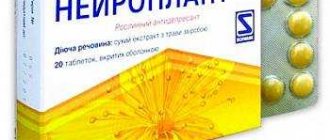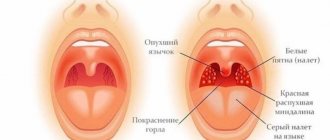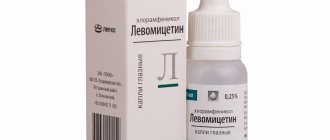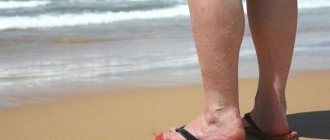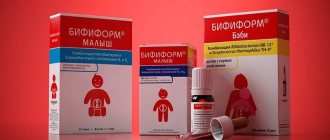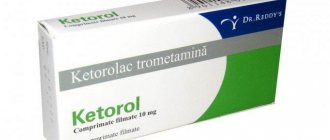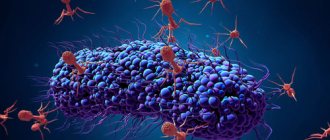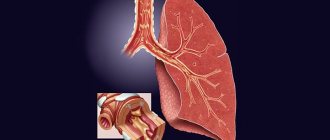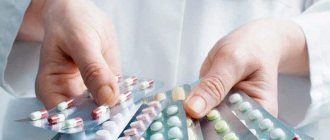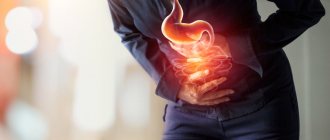Nootropics are neurometabolic stimulants that have a positive effect on complex psychophysiological processes. The mechanism of their action is associated with the restoration of the bioenergetic and metabolic functions of the neuron, as well as the neurotransmitter systems of the brain. The principle of operation of nootropic drugs, as their name suggests, is aimed at improving the functioning of the parts of the brain that are responsible for learning, memory, attention and other cognitive functions.
Nootropic drugs are drugs containing organic or synthetic active substances, as well as their derivatives, which stimulate the functioning of neurotransmitters. They are grouped into a pharmacotherapeutic group with the ATX code N06BX (“Other psychostimulants and nootropic drugs”).
The term nootropics was coined in 1972 by Romanian chemist, psychologist and Ph.D., Corneliu E. Giurgea, who first synthesized piracetam in 1964. Its therapeutic effect turned out to be the opposite of the chemist's expectations - characteristic of psychostimulants, without the occurrence of non-core actions. This effect still remains a mystery to scientists.
Nootropics used in medicine today are presented in the international drug classification system (Anatomical Therapeutic Chemical, ATC), adopted by the Ministry of Health of the Russian Federation in 2002. Other nootropic drugs are created for use within specific countries and are not introduced into the international market.
Mechanism of action and pharmacology of nootropics
Today, nootropics mean drugs aimed at changing the higher functions of the human brain; they affect:
- Memory mechanisms and learning new information.
- Improves overall brain activity.
- Resistance of the internal functioning of neurons to various negative factors.
- Increasing the functioning of cortical connections, that is, processes occurring in the cortex and hemispheres of the brain.
This type of drug was first discovered back in the 60s of the last century, when studying the synthesized chemical substance - piracetam. Piracetam was the first substance to have the effect of improving neural connections.
All nootropics have similar versatile effects on the body:
- Increase the activity of neurons responsible for mental reactions.
- Strengthens the quality of the central nervous system.
- Improves the spread of nerve impulses (neurotransmission).
- Promotes the utilization of glucose, which is responsible for the energy supply of muscles.
- They stabilize the condition and strength of cell membranes, which ensure cell integrity.
- They have a positive effect on the activity of nucleic acids responsible for storing and transmitting information.
- Preserves brain metabolism during a lack of oxygen.
All such drugs have a cumulative effect, so their effect appears, on average, after 2 weeks.
Nootropics have a positive effect on blood circulation in the head, helping to improve the functioning of the central nervous system, which makes them useful in the treatment of neurological and psychological disorders.
For adults
Adult patients are prescribed nootropics in various fields of medicine. Many people take medications to improve memory, vision and attention. In more severe cases, when the functions of the brain and central nervous system are seriously impaired, patients are prescribed stronger drugs of the group. For example, after strokes.
From the extensive list of nootropics, we will name only a few of the best.
1. Sulbutiamine is an analogue of vitamin B1, fat-soluble, perfectly penetrates the barrier between the circulatory and central nervous systems (nemato-encephalic) and accumulates in the brain.
By increasing choline levels, Sulbutiamine helps improve memory, and a good mood is a consequence of its effect on glutamate and dopamine levels.
A course of taking the drug eliminates erectile dysfunction that has psychological causes.
2. Nootropil, a medicine based on piracetam, is widely used:
- in neurology - to restore intellectual and mnestic functions;
- in psychiatry – for the treatment of depression and apathy in schizophrenia;
- in narcology – to relieve withdrawal symptoms;
- in pediatrics – for cerebral palsy and developmental delays.
Classification of nootropics
Depending on the effectiveness and characteristics of the mechanism of action, nootropics are divided into 2 classes:
- Mnestic drugs aimed at improving cognitive processes.
- Neuroprotectors that protect brain neurons from damaging factors of various etiologies (causes).
The first group of drugs includes the following active substances:
- A group of racetams (piracetam, rolisiracetam, etiracetam, dupracetam, oxiracetam, aniracetam, pramiracetam).
- Cholinergic agents that promote vasodilation, improve blood circulation and the condition of smooth muscles of internal organs (rivastigmine, choline chloride, bethanechol).
- Neuronal peptides that regulate the physiological functions of the body.
- Amino acids are the building blocks for all proteins in the body (glycine, nooglutyl, biotredin)
Neuroprotectors consist of:
- a class of substances that activate metabolic processes in the brain: pentoxifylline, acetyl-L-carnitine;
- cerebral vasodilators, strong vasodilators;
- calcium antagonists, which help in the fight against hypertension;
- groups of substances affecting inhibitory neurons of the central nervous system;
- antioxidants that protect the body from external toxic factors;
- other drugs of various groups: huato boluses, naftidrofuril, ginkgo biloba extract, etimizol, melatonin.
Nootropic substances are also included in other pharmacological drugs aimed at improving cardiac and brain function.
Some experts divide nootropics into the following types:
- Neutral, provided cognitive effect.
- Invigorating, improving physiological reactions.
- Calming, affecting psychological and neurotic syndromes.
https://www.youtube.com/watch?v=ucSMpf-p0_A
In modern practice, the main type of nootropics is the group of racetams, which have the most effective effect in the treatment of cognitive disorders.
Without prescriptions
Uncontrolled use of nootropic drugs can lead to serious consequences, so they can only be purchased in online pharmacies with a doctor’s prescription. This group of drugs is not suitable for self-medication, as it requires individual recommendations and the correct dosage.
There are several drugs that can be purchased at pharmacies without a prescription.
For example, L-theanine. This amino acid is present in almost all types of tea, and in Asian countries it is widely used for mental disorders. L-theanine helps with nervous disorders, hyperactivity and sleep disorders. It has a pronounced sedative effect, but does not cause lethargy or drowsiness, and acts gently.
The nootropic helps:
- remove anxiety;
- improve sleep;
- relieve stress;
- improve attention.
Gotu Kola is a natural medicine available without a prescription in the form of tablets, capsules, and tinctures. It got its name from the plant that is part of it. Gotu kola works as an antioxidant and brain cognitive enhancer.
The medicine reduces the level of cortisol in the body, reducing attacks of stress, and at the same time increases the amount of serotonin and dopamine. Also helps with stroke and Alzheimer's disease.
Indications for the use of nootropics
Nootropics are used as primary or auxiliary agents in various fields of medicine:
- psychotherapy;
- psychology;
- pediatrics;
- neurology;
- narcology;
- obstetrics.
And also in complex treatment of the following disorders:
- acute vascular pathologies;
- alcoholism;
- epilepsy;
- depression;
- schizophrenia;
- hyperactivity;
- cognitive impairment;
- behavioral deviant reactions;
- intoxication;
- delayed speech development;
- impaired blood flow as a result of head injuries;
- neurotic disorders;
- insomnia;
- manifestations of vegetative-vascular dystonia;
- lesions of the central nervous system that occurred during childbirth;
- Alzheimer's and Parkinson's disease;
- attention deficit syndrome.
Some types of active substances of nootropics are included in the treatment of eye diseases, diseases of the urethra, migraines and stuttering.
TOP 10 rating
There is a rating of nootropic drugs, which includes the most effective nootropics for improving brain activity. The list of drugs includes the best nootropics that have proven their effectiveness in solving various problems in the field of neurology, addiction, pediatrics, ophthalmology, and psychiatry.
Nootropics are prescribed for a number of diseases:
- dementia;
- Alzheimer's disease;
- memory disorders;
- asthenia;
- cerebral circulatory disorders after a stroke;
- VSD;
- alcoholism;
- cerebral palsy;
- stuttering in children;
- urinary disorders;
- dizziness;
- sleep disorder;
- vascular eye diseases, etc.
The TOP 10, according to experts, includes the following effective nootropics for improving memory and brain function:
- Fenotropil
- Phenibut
- Prapiracetam
- Oxiracetam
- Aniracetam
- Nootropil
- Noopept
- Alpha GPC
- Sulbutiamine
- 5-HTP
Old generation drugs
Old generation nootropics are derivatives of the first synthetic drug Piracetam. They are aimed at improving existing cells
brain
These means include the following names:
- Nootropil.
- Tanakan.
- Omaron.
- Thiocetam.
- Olatropil.
- Glycine.
Such drugs affect psychological reactions and the general condition of the human nervous system.
They were among the first drugs to improve memory mechanisms and perseverance.
A distinctive feature of all the drugs listed above is a general positive effect on the thought process and an increase in critical perception.
They are well absorbed into the body and easily penetrate into the brain tissue, providing a therapeutic effect.
The disadvantage of these racetams is the feeling of drowsiness that occurs after use, which interferes with the use of the drug during the daytime. The course of taking older generation nootropics is often 2-3 months without harm to health.
In combination with antidepressants, piracetam increases their effect, which has a positive effect on the course of treatment.
It has been clinically proven that Piracetam, which is part of nootropil, does not have the desired effect in the treatment of Alzheimer's disease and patients with dementia. Older generation drugs only work with long-term use, and after discontinuation of the course, a rapid fading of the effect may be observed.
Dosage
The permissible dose is 10 mg. Should be taken twice a day after meals. If there is an urgent need, the dose can be increased to 20-30 mg per day.
If you take Noopept closer to the night, you may experience insomnia.
Experts recommend following a course of treatment lasting 1-3 months. If necessary, you can repeat the course of treatment after a month's break.
It's worth starting with a small dose. It can be gradually increased as needed. Some patients indicate a decrease in nootropic effect if taken in large quantities.
Patient experience is based on whether long-term, continuous use leads to addiction. Some users prefer to take Noopept in cycles to prevent addiction.
New generation nootropics
The new drugs are the 3rd generation and include the following nootropics:
- Lecithin.
- Carphedon.
- Phenotropil.
- Sydnogluton.
- Phezam.
- Diaperam.
- Cerebrolysin.
- Cortexin.
- Semax.
- Ginkum.
Nootropics (the list of drugs with proven effectiveness is gradually changing by scientists) of a new type are aimed at creating new neural connections and improving existing ones.
They contribute to the formation and stable operation of neurotransmitters, which transmit signals from one nerve cell to another, thereby ensuring the normal functioning of the central system. Also, nootropic substances of this generation help the body produce the energy needed during moderate to vigorous physical activity.
Such nootropics have a positive effect on the human immune and cardiac systems by improving blood supply to brain cells. Thanks to their vasodilating effects, nootropics remove plaque and blockages in the arteries and improve the functioning of neurons that transmit signals to the central nervous system.
The disadvantage of these drugs may be irritability and insomnia, which can be relieved with calming nootropics.
New generation nootropics have not been studied well enough, and therefore there is no accurate data on the mechanisms of their action.
To restore intelligence and memory
Since nootropics have a beneficial effect on cerebral circulation, they are most interesting as an effective means for preserving and restoring intelligence and memory, especially in old age.
Let's briefly look at two natural preparations:
1. 5-HTP is a dietary supplement based on tryptophan, a processed amino acid, that can be purchased without a prescription. It has been proven that a lack of tryptophan in the body negatively affects a person’s emotional state, causes insomnia and nightmares, and also reduces libido and causes sexual disorders.
The 5-NTR nootropic normalizes the level of serotonin, the “hormone of joy,” helping to eliminate all negative conditions caused by its deficiency.
2. Alpha GPC is a fatty acid that the body produces in small quantities. Present in some protein foods. Taking the drug helps:
- Preserve and develop brain cells.
- Produce growth hormone and improve physical strength.
- Increase your focus and maintain a clear mind.
- Recovery for patients who have suffered an ischemic stroke.
Nootropics with a calming effect
Popular nootropics with sedative effects are:
- Phenibut.
- Calcium hopantenate.
- Pantogam.
- Glycine.
- Mexidol.
These drugs have a calming effect on the central nervous system due to inhibition of neurotransmitters. They relieve mild neurotic conditions and are especially popular in the treatment of children, due to their less powerful effect on the child’s brain, unlike other drugs.
Basically, such sedatives are used for:
- hyperactivity in children;
- restless sleep;
- restlessness and memory impairment.
In addition, Phenibut is prescribed for nausea while driving a car (or other vehicle) and for the treatment of mild panic attacks.
Nootropics (the list of drugs with a proven sedative effect is presented above) are widely used in neurological practice, as they help calm people with increased anxiety and constant tension. Also, when using them, there is a decrease in pain in the head and temples.
The disadvantage of such drugs is drowsiness, which can occur due to an overdose or individual characteristics of the body (hypersensitivity to vitamin B).
Reviews of nootropics from patients
Most reviews of nootropic drugs are positive, due to their effectiveness in various vascular disorders. Nootropics normalize the condition of patients for a long time, eliminating the symptoms of cerebrovascular insufficiency.
Maria: The drug “Phenibut” helped me cope with a difficult life situation, which first made me depressed, and then completely deprived me of peace and sleep. I wanted to cry and scream all the time. A neurologist prescribed Phenibut to my child. After reading the instructions, I decided to drink it. The pills gave me back my sleep, peace and tranquility. Nervousness, irritability and anxiety no longer torment me. My child began to sleep better after treatment with Phenibut. He no longer throws me tantrums for no reason. I would recommend this drug to people suffering from insomnia, apathy towards everything, and depression. For me, Phenibut is the best nootropic!
Oleg Anatolyevich: “Piracetam” is a classic, true nootropic drug that has had the most beneficial effect on my body. For many years I have been suffering from arthrosis, chondrosis, and vegetative-vascular dystonia. Problems with the spine and blood vessels led to the fact that the brain stopped regularly receiving oxygen and the nutrients it needed. After the first three days of taking Piracetam, I developed drowsiness, which quietly went away on its own, and along with it anxiety, tension and apathy. An amazing lightness appeared in the body. The brain began to work much better, attention and memory improved, and performance increased. My mood improved noticeably and steadily; it became smooth and positive throughout the day. It costs a lot!
Dmitry: Headaches have plagued me since childhood. And not so long ago, panic attacks appeared, rapid heartbeat, pulsation in the temples. The neurologist prescribed me the nootropic drug Phezam. You need to take it in a course of one tablet three times a day. I took a pill during an attack, after which the pulse returned to normal, the headache disappeared, and the anxiety dulled. In addition, I noticed that Phezam is an excellent remedy for nausea, motion sickness and dizziness. I rarely take this drug, but it always helps. I recommend it to anyone who is anxious and often nervous.
Zinaida: I took Picamilon for prophylactic purposes. The body does not always recover quickly after physical or mental stress. Nootropics speed up the healing process. “Picamilon” improves mental state, increases the resistance of the nervous system to aggressive influences, and is used for depression and heavy physical exertion. This harmless drug always helps me. In addition, it is an excellent price-quality ratio. The cost of Picamilon tablets is 80-100 rubles, and the solution for injection is 120 rubles. In general, I'm satisfied!
Most reviews about the use of nootropics for children are positive. 10 days after the start of treatment, children's sleep improves, it becomes deep and long. They focus better on their studies and comprehend the learning material. The newest nootropic drugs are well tolerated by children. The only disadvantage of drugs in this group is their ability to cause drowsiness and lethargy in the first days of treatment.
Preparations with an activating effect
Nootropics with an invigorating effect are designed to protect the cellular structure of the brain and are aimed at treating many diseases accompanied by a decrease in intelligence and nervous reactions.
The main drugs in this group are:
- Tanakan.
- Encephabol.
- Noben.
- Phenotropil.
- Nooclerin.
The effect of such nootropics is determined by improving the speed of blood flow to neuronal cells, which contributes to the timely transmission of nerve impulses to the central nervous system.
All this has a positive effect on restoring consciousness and stabilizing general blood circulation in the brain.
Some drugs with an activating effect have high metabolic activity, which regulates the basic processes of production of hormones, inhibitory and excitatory neurotransmitters.
Such neuroregulators should be taken only under the guidance of an experienced doctor who has knowledge of the main symptoms of overdose.
The downside to energizing nootropics is that there is little data on their exact degree of effectiveness.
Pharmacological group
Nootropics are placed in a separate pharmacological group (ATC code: N06ВХ).
Piracetam (1963) is considered the first discovered nootropic, which gave rise to the “racetome” branch. It became the main competitor for psychostimulants, but did not have the side effects (addiction, exhaustion, psychomotor agitation, intoxication) that the latter were prone to. The new synthesized drug improved memory, attention, and helped to concentrate better. In its early days, the new drug was used to treat brain dysfunction in older people.
In 1972, a new designation was proposed - “nootropic”. Piracetam is now known under the trade name Nootropil. However, the mechanism of its action has not yet been fully studied.
The best drugs for children
The most commonly used nootropic drugs in pediatrics are:
- Glycine (40 rub.);
- Pantogam (440-700 rub.);
- Kogitum (4500 rub.);
- Picamilon (80 - 150 rubles);
- Encephabol (990 rub.).
These drugs have a positive effect on the child’s brain, increasing blood circulation and normalizing the processes of excitation and inhibition of neurons.
The first two drugs have a mild sedative effect along with the main cognitive effect. Cogitum is available in ampoules, and is prescribed for general lethargy of the child and reduced motor activity. Used for serious disorders of the central nervous system.
Picamilon effectively copes with the treatment of disorders such as speech and psychomotor dysfunction. Against the background of the main effect, it helps to stabilize the functioning of the bladder, by eliminating the neurogenic disorders associated with it.
Side effects
Side effects that occur during treatment with nootropic drugs:
- Hyperexcitability,
- Weakness,
- Insomnia,
- Worry, anxiety,
- Dyspeptic symptoms
- Hypotension,
- Hepato- or nephrotoxicity,
- Eosinophilia,
- Frequent attacks of angina pectoris,
- Convulsions, seizures,
- Balance imbalance
- Hallucinations,
- Ataxia,
- confusion,
- Fever,
- Thrombophlebitis and pain at the injection site,
- Motor disinhibition,
- Feeling of heat and facial flushing,
- Rash on the face and body like urticaria.
Natural Nootropic Medicines
Among the total number of nootropics, it is worth paying attention to their natural analogues.
The most famous of them:
- Caffeine - stimulates the functioning of the intellect, gives a feeling of vigor.
- The Rhodiola plant , originally from the East, has a positive effect on a person’s mental abilities and stimulates the production of serotonin, the “happiness” hormone.
- L-theanine , found in green tea, has a relaxing effect, promoting stress resistance and concentration.
Such nootropics are effective for mild behavioral disorders, for the treatment of neurological and brain disorders; natural medicines based on these substances will not bring the desired effect.
What is this?
Nootropics are a group of drugs that have a positive effect on brain function by stimulating metabolic processes between nerve cells. Piracetam was the first nootropic drug to be developed in 1963 in Belgium. And the class “nootropics” was introduced in 1972 to designate drugs that improve integrative brain functions. These include:
- memory;
- learning ability;
- attention;
- thinking;
- speech;
- consciousness;
- behavioral adaptation.
Among the many effects of nootropic drugs on the body are the following:
- improvement of mental activity;
- increased attention, concentration;
- stimulation of memory and cognitive abilities;
- resistance to increased mental and physical stress;
- increasing the threshold of brain stability during hypoxia.
In simple terms, a person taking drugs from this group, thanks to improved blood circulation, begins to think faster, better assimilate educational material, remembers large amounts of information well and is able to work productively under heavy loads. Nootropics also help overcome stressful situations.
Most of it is released strictly according to a doctor's prescription.
Synthetic drugs whose effectiveness has not been proven
Nootropics (a list of drugs with proven effectiveness is usually provided by doctors during consultation) come in different types, they differ in the degree of influence and impact on the body.
There is an opinion that some nootropic drugs are ineffective and do not have any effect on freedom of thought and concentration.
One of these “unproven” drugs is Actovegin, whose effectiveness is widely advertised, but in most cases is not confirmed in practice.
This may be due to the fact that in Russia there is no law that obliges manufacturers to prove the clinical effectiveness of their drugs. Therefore, many medications, not just nootropics, may vary in their effectiveness, and the effect of each drug is not always proven from a scientific point of view.
A feature of nootropics is their cumulative effect, which manifests itself only 1-2 weeks after administration. It is also worth taking into account the characteristics of each person and his lifestyle, on which the natural processes of mental activity depend.
Cost of treatment in our clinic
| Service | Price | |
| Ambulatory treatment | ||
| Psychiatrist consultation | 4 000 ₽ | |
| Consultation with a psychotherapist | 4 000 ₽ | |
| Psychodiagnostics extended | 6 000 ₽ | |
| Consultation with a psychiatrist at home | 4 400 ₽ | |
| Treatment in hospital | ||
| Delivery to hospital | For free | |
| Standard room | 6 900 ₽ | |
| 3-bed superior room | 9 400 ₽ | |
| 2-bed superior room | 12 000 ₽ | |
| 1 local VIP chamber | 16 000 ₽ | |
| Doctor's appointment 2 weeks after discharge | For free | |
Features of the use of nootropics
When using nootropics, the following factors should be kept in mind:
- To achieve the best result, it is necessary to use the drug in courses, the duration of which depends on the reason for use and the doctor’s recommendations.
- The effectiveness of nootropics in preventing stroke and treating its consequences has not been proven, and works in less than half of the cases.
- Before taking it, you must study the instructions for use to identify any special contraindications and conditions for each drug.
- Due to the presence of effects of varying degrees, the drug should be selected carefully. If you have hyperactivity, you should not uncontrollably use nootropics that activate brain activity, especially in children.
- You cannot use the drugs for a long time without a break, as the brain cells get used to it and sudden withdrawal can lead to negative consequences.
Nootropics in most cases should be used 1-2 times a day under the supervision of a physician.
List of used literature
1. Klitochenko G.V., Malyuzhinskaya N.V. "The use of nootropic drugs in pediatrics."
2. Pichikov A.A., Popov Yu.V. "Anorexia nervosa in adolescent girls: course options, relapse factors and suicidal risk in the early stages of treatment."
3. Davydova O.N., Boldyrev A.A. "Glutamate receptors in cells of the nervous and immune systems."
4. Vostrikov V.V. "The place of piracetam in modern practical medicine."
5. Shabalov N.P., Skoromets A.A., Shumilina A.P. “Nootropic and neuroprotective drugs in pediatric neurological practice.”
6. Malykh A., Sadaie R. “Piracetam and piracetam-like drugs: from basic science to novel clinical applications to CNS disorders.”
7. Calliauw L., Marchau M. “Clinical trial of piracetam in disorders of consciousness due to head injury.”
8. Rybak V.A., Matokhina N.V. “Nootropic drugs in the clinical practice of a neurologist.”
What adverse reactions are caused by the drugs in this group?
Uncontrolled and incorrect use of nootropics can lead to the appearance of:
- motor dysfunction;
- addiction syndrome to active substances;
- sleep disorders and hyperarousal.
Nootropics have low toxicity, so the risk of these reactions is unlikely.
The opinion of ordinary people
I took Piracetam capsules. The drug really works, but you shouldn't expect anything supernatural from it. I never became a genius, but the learning processes are really improving, which helped me successfully prepare for the exam at the institute. It also helped me concentrate on exams.
Evgeny Prokhorov. 25 years
The first nootropic I came across was Piracetam. I took it according to all the rules (along with vitamins and lecithin). After a two-month course, I can say that I liked the effect: increased excitement, desire to do something, long-term concentration.
Oleg Semakhin. 20 years
I became interested in the topic of nootropics for a long time, I tried a lot and I especially want to mention Phenotropil. After taking it, you feel the effect of slowing down time. I have time for everything. More than enough strength. I once wrote a coursework in 3 hours (I took 3 pills).
Sergey Kozhukhov. 21 years old
Contraindications to taking nootropics
Contraindications to taking nootropic drugs depend on their group and conditions of use, however, there are general contraindications for all classes of drugs:
- presence of hypersensitivity to components or active substance;
- advanced stages of neurological diseases with severe psychomotor impairments;
- bulimia;
- renal or liver failure;
- hemorrhagic stroke;
- Huntington's syndrome (a genetic disease of the nervous system characterized by progressive mental disorders).
Nootropics should be used with special caution by pregnant and lactating women, since there are no results from studies of lists of drugs with proven effectiveness in women during pregnancy and lactation.
Warning
Under no circumstances should any medications be taken thoughtlessly, because even the safest drugs can lead to undesirable consequences. So be careful and extremely responsible, and use nootropics only after consulting a specialist. These are most often neurologists, but sometimes they also turn to psychiatrists. In some cases, a nootropic may be prescribed by a pediatrician, neurosurgeon, ophthalmologist or cardiologist.
And in conclusion, we invite you to get acquainted with the doctor’s opinion about nootropics. Be healthy and let your brain work at 100% without the use of third-party drugs!
Results of taking the drugs of the group
When taking these drugs, in most cases there is improvement:
- work of the nervous system, manifested in maintaining calm and natural reactions;
- performance under normal and stressful conditions;
- motor activity in children.
- clarity of consciousness and ability to fall asleep in children and adults.
Results depend on the duration of use and the conditions of the disorder; in some cases, neurological diseases and brain diseases require complex therapy.
Nootropics are often recommended for students and schoolchildren to enhance memory functions and improve concentration necessary for studying.
When choosing a suitable nootropic, you should always rely on the opinion of a doctor who has his own list of drugs with proven effectiveness.
Article design: Vladimir the Great
What determines the therapeutic effect of drugs from this group?
Ensures the operation of the following mechanisms, thanks to which the positive effect of taking nootropics is achieved:
- supports the energy structure of the neuron;
- improves the main and conductive functions of the central nervous system;
- activates the plastic function of the central nervous system;
- improves metabolic processes (glucose utilization);
- stabilizes cell membranes;
- reduces the neuron's need for oxygen;
- has a neuroprotective effect.
Nootropics in the practice of a pediatric neurologist
The first years of human life are a stage of critical importance for the development of the brain; during this period, the neurological basis for its intellectual and mental development is created. The child's brain has many more neural connections than an adult: it “absorbs” all the information it receives, and only through learning and experience does it gradually begin to concentrate on individual perceptions, and the neural network is formed into a simpler but more specific form. During this period, the child’s brain is extremely vulnerable and requires special attention from parents and neurologists: due to age, the risk of damage and injury is higher compared to the adult brain, but at the same time it has much better plasticity and the ability to regenerate (after a bruise, concussion, inflammation), and, of course, disturbances in its functioning are better amenable to correction.
But, according to the World Health Organization, up to 1/5 (20%) of all children and adolescents on the planet suffer from various disorders of cognitive functions (the ability to understand, know, study, be aware, perceive and process - remember, transmit, use external information).1 —2 Most often these are disturbances of memory and attention (its concentration, volume, switching, distribution, stability). Pediatricians often have to deal with speech disorders (in severe cases, the child is not only unable to speak clearly and clearly, but also poorly perceives other people’s speech). And the situation is getting worse: currently, serious disorders in speech development are observed in 25% of four-year-old children, in the mid-1970s there were only 4%.3 And, if proper measures are not taken, the child may develop complex social problems in the future ( communication, development of complexes, inability to fully realize potential).
The range of risk factors for the occurrence of cognitive defects in children is extremely wide: previous diseases with damage to the brain, injuries, ischemic lesions, and others.
The child does not fall asleep well, his sleep is shallow and restless, he complains of general fatigue and headaches. Parents note that their child has learning difficulties, irritability, intolerance to bright light and sounds, anxiety, bad mood, touchiness or unjustified aggressiveness, and sudden mood swings. And the doctor diagnoses the young patient with affective lability, polyalgic syndrome, asthenic condition, etc. And these psycho-emotional disorders cannot remain without the attention of specialists.
Timely diagnosis, assessment of the level of compensatory capabilities and treatment and rehabilitation methods allow many children with such problems to be helped. Having shown the universality of the mechanisms of cell damage in various types of pathological processes and having established that the final link in inflammation, ischemia and stress is a violation of redox reactions, metabolism and energy supply of cells, scientists have proposed special means - nootropic drugs. So, to the possibilities of properly organizing a child’s routine (sleep/activities/walks), his nutrition (in accordance with age), eliminating socio-economic (if possible) and psychological problems, and correctional and pedagogical rehabilitation, many specialists have added pharmacotherapy.
Neurotrophic therapy
To combat cognitive and emotional disorders in children, many domestic experts1 recommend the use of neurotrophic therapy (NTT), which is based on nootropic or neurotrophic drugs (NPs), which formed a separate group in the early 1970s.
Nootropics are a group of drugs that differ in composition and mechanisms of action, but have common properties. By normalizing metabolism and interneuron transmissions, they improve mental activity, attention, speech (activate learning processes - nootropic effect; improve memory - mnemotropic effect; reduce the need of neurons for oxygen during hypoxia - antihypoxic effect), and also increase the resistance of the central nervous system to adverse factors (hypoxia , intoxications, etc.). Nootropics not only have a positive effect on cognitive functions, but also correct emotional and behavioral disorders.4-6
General indications for prescribing NP to children:1
- delayed mental and speech development;
- cognitive impairment due to organic lesions of the brain (including the consequences of neuroinfections, traumatic brain injuries, genetic pathology) and neurotic disorders;
- consequences of perinatal damage to the central nervous system;
- cerebral palsy;
- mental retardation;
- comatose states of vascular, traumatic or toxic origin;
- attention deficit hyperactivity disorder;
- memory impairment, dizziness, decreased concentration, emotional lability and other manifestations of asthenic syndrome of various origins;
- psycho-emotional overload, decreased mental and physical performance (to improve concentration and memory).
Foreign colleagues do not perceive NTT practice so clearly. The main arguments against such therapy are the lack of evidence-based studies of its effectiveness in conditions of developing intellectual-mnestic function and convincing data on the safety (in the long term) of use in children. Indeed, a number of NPs present on our market do not have a satisfactory evidence base.7 And the ambiguity and polyetiological nature of the biological nature of cognitive disorders in children significantly limit the possibilities of their pharmacotherapy. Nevertheless, the compilers, for example, of the methodological recommendations of the Moscow Department of Health (No. 26 “The role of neurotrophic therapy in the practice of a pediatric neurologist”)1 provide a list of commonly used neurotrophic drugs approved for use in neuropediatrics with the main parameters of their clinical activity.
Table 1. Parameters of clinical activity of neurotrophic drugs1
| № | Action | Influence | INN |
| 1 | Psychostimulant | for apathy, hypobulia, aspontaneity, poverty of motives, mental inertia, psychomotor retardation | Piracetam, pyritinol, meclofenoxate, hexobendine + etamivan + etophylline, gammalon, nicotinoyl gamma-aminobutyric acid (Picamilon), cattle cerebral cortex polypeptides |
| 2 | Antiasthenic | for weakness, lethargy, exhaustion, mental and physical asthenia | all classes of NP |
| 3 | Sedative (tranquilizing) | for irritability, emotional weakness | release active form of antibody to brain-specific protein S-100; hopantenic acid, aminophenylbutyric acid, nicotinoyl gamma-aminobutyric acid (Picamilon), complex of peptides from pig brain |
| 4 | Antidepressant | for low mood | piracetam, hexobendine + etamivan + etophylline, porcine brain peptide complex, nicotinoyl gamma-aminobutyric acid (Picamilon), cattle cerebral cortex polypeptides |
| 5 | Increases alertness and clarity of consciousness | for depressed (stupor, stupor, coma) and darkened (delirium, confusion) consciousness | all classes of NP |
| 6 | Antiepileptic | for epileptic paroxysmal activity | hopantenic acid, sodium hydroxybutyrate, polypeptides of the cerebral cortex of cattle |
| 7 | Nootropic | on developmental delay or impairment of higher cortical functions, level of judgment, critical capabilities, strengthening cortical control of subcortical activity | all classes of NP |
| 8 | Mnemotropic | for memory, learning | all classes of NP |
| 9 | Adaptogenic | on tolerance to various exogenous factors, including | all classes of NP |
| 10 | Vasovegetative | for headaches, dizziness, autonomic instability as part of cerebrasthenic syndromes | all classes of NP |
| 11 | Antiparkinsonian | for extrapyramidal parkinsonian disorders | hopantenic acid, piracetam, pyritinol, aminophenylbutyric acid |
| 12 | Antidiskinetic | for extrapyramidal dyskinetic disorders | hopantenic acid, piracetam, pyritinol, aminophenylbutyric acid |
In this table, attention is drawn to the versatility of one drug - nicotinoyl gamma-aminobutyric acid (Picamilon®). This neurometabolic cerebroprotector can influence almost all manifestations of cognitive and emotional disorders in children. Its effects help improve memory and the learning process, have a positive effect in asthenic and adynamic disorders, increasing motor and mental activity, increase the ability to concentrate and provide a positive effect in neurotic conditions.
Universal component of NTT
Nicotinoyl gamma-aminobutyric acid became the first original domestic nootropic (synthesized in 1969 at the All-Union Scientific Research Institute of Vitamins by V.M. Kopelevich, L.M. Shmuilovich and V.I. Trubnikov). An elder among NPs with extensive experience in clinical practice - since 1986.
Chemically, this drug is a unique combination of GABA (the most important inhibitory neurotransmitter of the central nervous system) and nicotinic acid (vitamin PP, vitamin B3) - a participant in many redox reactions, lipid and carbohydrate metabolism in cells, etc. That is, each of the components is physiological and plays an important role in ensuring the metabolism of nerve cells and maintaining the biochemical processes necessary for the transmission of nerve impulses, and in a duet it is more effective than when used separately. Thus, GABA in nicotinoyl gamma-aminobutyric acid has improved pharmacokinetic properties: nicotinic acid helps it penetrate the blood-brain barrier (BBB) - the protective system of the brain, and also potentiates the vasodilator, antihypoxic, neurometabolic, antiplatelet effect.8
The new formula stimulates redox processes, helps increase the consumption of oxygen and glucose by nervous tissue, after ischemia helps restore the processes of utilization of energy substrates, and prevents an increase in the concentration of lactic acid in brain tissue. All these properties of NP have a beneficial effect on the cognitive functions of the brain and the child’s performance, contribute to the restoration of central motor and speech disorders of various origins, and improve blood circulation in the vessels of the retina and optic nerve.
Combining the two molecules not only added to the drug’s effectiveness, but also improved tolerability, eliminating some of the unwanted side effects that accompany separate administration of the components.8
The rationale for the use of nicotinoyl gamma-aminobutyric acid in the treatment of young patients with emotional disorders is primarily its anxiolytic (or tranquilizing) effect. The drug reduces the patient’s feelings of fear and anxiety, without sedation, and increases emotional activity, which is also important for this category of patients.9-10
Headaches, increased fatigue, sleep disturbances - the main complaints in asthenic conditions - noticeably regress when taking Picamilon®.10 An improvement in the condition is noted by many specialists.8-10 Thus, already on the 2-3rd day from the start of therapy, emotional lability and headache.10
When using this drug in children, the general condition noticeably improves, the mood level increases, and daytime performance and activity increase.10-13 Most likely, these results are explained by the fact that in addition to the anxiolytic effect, this NP has a balanced multifaceted mechanism of pharmacological action, including vasoactive (directed at correction of vascular tone disorders), nootropic (determining the optimization of metabolic processes in cells) and other activities.8-9, 14-16
There is one more property of Picamilon®, which is very important for pediatricians and their patients - a depressive effect (prevention of euphoria), allowing the patient to maintain an objective perception of reality and work productively.8 Its use does not cause addiction, as well as muscle relaxation, drowsiness, lethargy, and lack of coordination. movements.8-9
Clinicians also draw attention to the fact that nicotinoyl gamma-aminobutyric acid can be used both in monotherapy and in complex therapy - in combination with antidepressants, anticonvulsants, potentiating their effect and improving tolerability (its trophic properties mitigate the undesirable effects of other drugs).1. 17
When individually selecting therapy, it is necessary to take into account the concomitant effects of NPs: those with a psychostimulating effect should preferably be taken in the first half of the day, and those with a sedative effect (like Picamilon®) - in the second half.
Picamilon® vs NDMP
In addition to the correction of cognitive and emotional disorders in children, nicotinoyl gamma-aminobutyric acid also has an indication in pediatric neurology for neurogenic urinary disorders (pollakiuria, urgency, urgency urinary incontinence, enuresis).1,18-19
Pediatricians are well acquainted with the problems of diagnosing and treating urinary disorders and urinary incontinence in children, which can be a consequence of anatomical defects of the lower urinary tract and adjacent organs, as well as organic lesions of the nervous system at various levels. Neurogenic bladder dysfunctions (NDBD) are one of the pressing problems of pediatric urology, and this is due not only to their significant prevalence and obvious upward trend.20-21
Social isolation, decreased levels of self-esteem, conflicts in kindergarten, school, and family are associated with this problem and inexorably reduce the child’s quality of life, psychologists note. And pediatric urologists warn about the risks of developing secondary changes in the urinary system - recurrent chronic cystitis, pyelonephritis, vesicoureteral reflux, ureterohydronephrosis, leading to nephrosclerosis, arterial hypertension and chronic renal failure.20,22
All these aspects force scientists to constantly look for new approaches to treating such patients. And with the discovery of new pathogenetic mechanisms for the formation of bladder dysfunction, the role of complex biological processes, in particular detrusor hypoxia, experts paid attention to the possibilities of NP and nicotinoyl gamma-aminobutyric acid in the complex therapy of LUTD.
Employees of the National Medical Research Center for Children's Health (Moscow) and the Center for Urinary Pathology (Volgograd)19 confirmed the ability to normalize detrusor-sphincter relations in a number of neurotransmitter acid derivatives, analyzing the characteristics of clinical manifestations and urodynamic parameters depending on the type of therapy for neurogenic bladder dysfunction, in particular , hyperreflex type. Their study (185 children aged 3 to 15 years) compared the effectiveness of NDMP therapy with Picamilon (group III - 5 mg/kg/day in 3 doses, orally, after meals) with other NPs. The results obtained in groups where, in addition to traditional therapy, children received nootropics, showed a significant decrease in the severity or complete cessation of urinary disorders both during the day and at night. The symptoms reflecting loss of reservoir function of the bladder regressed most noticeably: pollakiuria, urgency, imperative urinary incontinence and enuresis (Table 2). Uroflowmetry and retrograde cystometry showed that the clinical improvement in bladder function corresponded to an increase in the threshold of its sensitivity and reflex excitability, that is, an increase in the ability to accumulate and retain urine (reservoir function). The action of mediator amino acids noticeably affected the adaptive ability of the detrusor.
Six months after this course of therapy, during a follow-up examination in children from the NP groups (III-V), the results for all three studied indicators (increase in maximum bladder volume, increase in volume at the first urge and normalization of detrusor tone) were maintained. But in the comparison group (I) there were no significant changes compared to the baseline.
Table 2. Dynamics of the rhythm of spontaneous urination in children with LUTD before and during the treatment phase
| Groups (n = ) | Frequency of urination per day (norm: 4-5 times/day) | Effective bladder volume, ml | ||||||
| Minimum (normal: 46-68 ml) | Medium (normal: 140-192 ml) | Maximum (normal: 191-325 ml) | ||||||
| M±m | ||||||||
| Before treatment | After treatment | Before treatment | After treatment | Before treatment | After treatment | Before treatment | After treatment | |
| Traditional therapy (n = 37) | 9,7 ± 0,2 | 9,7 ± 0,2 | 33,9 ± 2,4 | 34,0 ± 2,5 | 103,4 ± 1,7 | 109,5 ± 1,7 | 121,4 ± 1,9 | 130,0 ± 1,8 |
| II piracetam (n = 37) | 9,7 ± 0,2 | 5,8 ± 0,11,*** | 34,4 ± 1,3 | 49,7 ± 1,01,*** | 103,2 ± 1,1 | 127,0 ± 1,21,*** | 133,1 ± 1,1 | 169,1 ± 1,51,*** |
| III Picamilon (n = 37) | 9,7 ± 0,2 | 5,0 ± 0,11,*** | 34,4 ± 1,3 | 102,6 ± 1,41,*** | 103,4 ± 1,1 | 123,1 ± 1,51,*** | 133,6 ± 1,2 | 172,9 ± 2,11,*** |
| IV taurine (n = 37) | 9,7 ± 0,2 | 5,0 ± 0,11,*** | 33,9 ± 1,2 | 69,2 ± 1,21,*** | 103,0 ± 1,0 | 118,0 ± 0,71,*** | 133,2 ± 1,1 | 169,0 ± 2,01,*** |
| V glycine(n = 37) | 9,7 ± 0,2 | 5,0 ± 0,11,*** | 34,4 ± 1,3 | 64,1 ± 0,91,*** | 103,2 ± 1,2 | 122,1 ± 0,91,*** | 133,5 ± 1,2 | 173,8 ± 2,4 |
| Note: 1 - Wilcoxon-Mann-Whitney (WMW) p. | ||||||||
Based on these data, the researchers made an obvious conclusion: neurotransmitter amino acid derivatives, including GABA derivatives (Picamilon®), have a positive effect on the urodynamics of the lower urinary tract at both the central and peripheral levels. And, what is important in pediatric practice, when treating young patients with nicotinoyl gamma-aminobutyric acid, side effects are observed very rarely. The drug does not cause psychomotor agitation, depletion of the body's functional capabilities, addiction or pharmacological dependence.1,19
Thus, many years of experience in using the drug “Picamilon” allows us to speak of its high effectiveness in the correction of cognitive and psycho-emotional disorders of various etiologies in children of preschool and primary school age. Research data confirm clinical practice: adequate use of this NP (in mono- and combination therapy) reliably improves indicators such as the volume and level of attention, short-term and long-term memory, as well as thinking. And many experts recommend its use in the treatment of such patients, especially in conditions of asthenia and increased psycho-emotional stress. The feasibility of using this drug in the complex treatment of neurogenic urination disorders is also confirmed by pediatric urologists.
Despite the unclear and polyetiological nature of the biological nature of childhood psychoneurological disorders and the ambiguous attitude of foreign specialists towards NP, neurometabolic activity, expressed by a number of effects (mild tranquilizing, psychostimulating, energizing effects, etc.), good tolerability and the availability of children's and adult dosages allow this unique domestic neurometabolic cerebroprotector will remain in the treatment of these conditions for many years, helping more than one generation of children and adolescents cope with ailments.
Literature:
1The role of neurotrophic therapy in the practice of a pediatric neurologist. Methodological recommendations No. 26, Moscow Department of Health / Institution-developer: State Budgetary Institution “Scientific and Practical Center for Pediatric Psychoneurology of the Moscow Department of Health”. M., 2015, 28 p.
2World Health Organization: World Health Report 2001. Mental health: new understanding, new hope. Geneva. WHO. 2001, 215 p.
3Pizova N.V. Cognitive impairment in childhood with some neurological diseases // Medical Council. No. 7, 2012, p. 86-91.
4Mazur I. A., Belenichev I. F., Stets V. R., Sidorova I. V. Nootropic therapy: past, present, future // News of medicine and pharmacy. No. 14 (155), 2004, p. 10.
5Fardieva R.M., Zalyalutdinova L.N. The use of nootropics for intellectual disability in children // Modern problems of science and education. No. 2, 2013, p. 78.
6Mosolov S. N. Current trends in the development of psychopharmacology // Journal of Neurology and Psychiatry named after. S.S. Korsakov. No. 5, 1998, p. 12-19.
7Frolova N.Yu., Buryakina A.V., Melnikova T.I. Neuroprotectors in pediatric practice // Remedium. Magazine about the market of drugs and medical equipment. No. 9, 2015, p. 54-60.
8Maruta N.A. Picamilon is a nootropic and vasoactive drug with a broad spectrum of action again on the pharmaceutical market of Ukraine // Pharmacist. No. 20, 2002.
9Pyatnitsky A.N., Yakovleva O.B., Sheshenin V.S. Picamilon in modern neurological and psychiatric practice // Materials of the Russian Conf. M. 1994, p. 111-114.
10Stakhovskaya L.V., Chekneva N.S., Leskova N.N. Use of the drug picamilon in neurological practice: Guidelines. M., 1993.
11Mirzoyan R.S., Seredenin S.B., Ganshina T.S. and others // Expert. wedge. Pharmacol. T. 61, No. 2, 1998, p. 28-31.
12Kolosova O.A., Osipova V.V., Luneva T.V. Picamilon is a new cerebrovascular and nootropic drug. Experimental results. and clinical studies // Abstracts. All conf. Ufa. VNIISENTI. M. 1989, p. 186-189.
13Erokhina L.G., Stakhovskaya L.V., Chekneva N.S. and others. Picamilon in modern neurological and psychiatric practice // Materials of the Russian Conf. M. 1994, p. 71-74.
14Picamilon is a metabolic cerebrovascular agent and nootropic. Application in medical practice. M., 2002, 48 p.
15 Pyatnitsky A.N., Panchenko G.V., Khionidi K.P. Picamilon is a new cerebrovascular and nootropic drug. Experimental results. and clinical studies // Abstracts. All conf. Ufa. VNIISENTI. M., 1989, p. 214-217.
16Ostrovskaya R.U., Trofimov S.S. Mechanism of action and clinical picture of γ-aminobutyric acid derivatives // Scientific notes of TSU. Tartu, 1984, p. 46-59.
17Lebedeva N.V., Suslina Z.A., Kistenev B.A. and others. Picamilon in modern neurological and psychiatric practice // Materials of the Russian Conf. M. 1994, p. 75-76.
18Artyukhina CB Zorkin S.N., Maslova O.I., Borisova S.A. The influence of neurotransmitter amino acid derivatives on urodynamic parameters of children with neurogenic bladder dysfunction // Pediatric surgery. No. 4, 2003, p. 25-28.
19Maslova O.I., Borisova S.A., Artyukhina S.V., Zorkin S.N. The influence of neurotransmitter amino acid derivatives on urodynamic parameters of children with neurogenic bladder dysfunction // Attending physician. No. 1, 2011, p. 61-63.
20 Vishnevsky E. L., Laurent O. B., Vishnevsky A. E. Clinical assessment of urinary disorders. M., TERRA, 2001, 96 p.
21Kolbe O. B., Safonov A. B., Sazonov A. N. et al. Modern aspects of the clinic, diagnosis and treatment of neurogenic bladder dysfunctions // Pediatrics. No. 4, 2000, p. 34-39.
22Lopatkin N. A., Pugachev A. G. Pediatric urology. M., Medicine, 1986, 490 p.
Summing up
Over the course of its almost half-century history, this pharmacological group has undergone significant evolution. More than a hundred trade names of nootropics have been created.
Their functionality includes a wide practical range: from the treatment of senile brain dysfunction to use in obstetrics, neurology and psychiatry. However, the mechanisms of their effect on the human body have not yet been solved - scientists have not yet come to the main proven hypothesis of his work.
Further testing of the drug is ongoing, and new samples are being synthesized.
Doctor Review
As a doctor, I am interested in the effect of nootropics within the framework of evidence-based medicine. Let's define the terms. Evidence-based medicine is a series of studies of a drug or treatment method on a certain number of patients. Methods and drugs that have passed this selection can be considered proven effective.
Does this mean that all methods and medicines that have not received recognition from doctors and remain with the status of “ineffective” cannot be used in medical practice? Rated drugs that have successfully passed testing do not always have the desired effect. Just like drugs that were screened out during research may still be useful.
Nootropics are heavily criticized in the light of evidence-based medicine; their effect is equated to the placebo effect. Most of these drugs have not gained acceptance.
But I cannot agree with this position, since for 15 years I have been observing a pronounced clinical effect from some nootropic drugs (Phenibut). On the other hand, the drug Picamelon does not give such a rosy picture - the desired effect is not observed.
The well-known stimulant of brain activity Nootropil has shown itself remarkably in terms of stimulating operational readiness. However, none of these drugs have received recognition from the scientific community.
Thus, the doctor should not blindly focus on the standards of evidence-based medicine. He must select what is appropriate for this particular patient in this particular situation.
Neurologist, 24 years of experience

